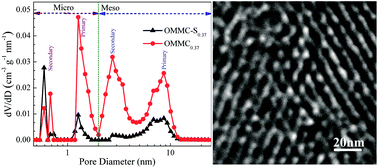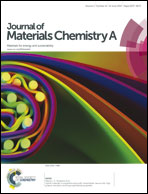Enlargement of uniform micropores in hierarchically ordered micro–mesoporous carbon for high level decontamination of bisphenol A†
Abstract
In this work we prepared hierarchically ordered micro–mesoporous carbon with enlarged uniform micropores, specifically tailored for the high level adsorption of environmental pollutant bisphenol A (BPA). Sizes of both the primary micropore (1.3 nm) and the primary mesopore (9.0 nm) could be tuned by controlling the condensation behavior of phloroglucinol–terephthalaldehyde resin in a tri-constituent system based on evaporation induced self-assembly. As a result of this the special structure was able to develop high surface area (623–1985 m2 g−1) and large pore volume (0.7–2.3 cm3 g−1). By tuning the micropore size to accommodate the molecular dimensions of BPA, an ultra-high adsorption capacity of 1106 mg g−1 was achieved, three times higher than previously reported values. Kinetic studies revealed that high pore interconnectivity and micropore accessibility were the key to unrestricted adsorbate diffusion through the pore channels and the subsequent high level adsorption. This development sheds new light on the importance of the carbon source in the control of pore size in carbons. The materials hold great potential for application in the purification of industrial process water with high level BPA contamination.


 Please wait while we load your content...
Please wait while we load your content...